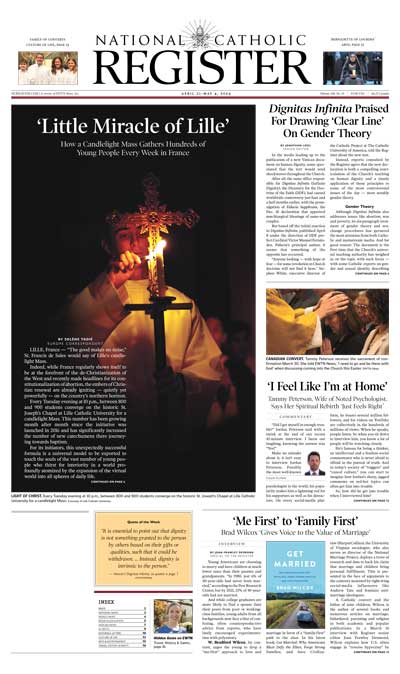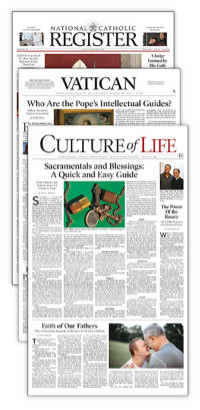Yad Vashem: Vatican Librarian Cardinal Tisserant Made Heroic Efforts to Save Jews
The World Holocaust Remembrance Center has honored him for his role in saving lives.

Cardinal Eugene Tisserant was a librarian who knew more than 10 languages, advised multiple popes and held key Vatican positions.
He also deserves credit for helping multiple Jews escape persecution in Europe, Yad Vashem, the World Holocaust Remembrance Center, said on Thursday. The Jerusalem-based center will remember the cardinal and two of his collaborators as “Righteous Among the Nations” in a ceremony at a later date.
Yad Vashem aims to educate about the Holocaust, its millions of victims and its perpetrators. The center has recognized about 28,000 people from 50-plus countries as “Righteous Among the Nations,” non-Jews who saved Jews during the Holocaust at great risk to themselves.
In particular, Yad Vashem recounted Cardinal Tisserant’s role in aiding Miron Lerner, who was born to Jewish immigrants in Paris in 1927 but orphaned in 1937 with his sister, Rivka.
In 1941 the siblings made their way to Italy with other Jewish refugees. Lerner found help from Father Pierre-Marie Benoît and others who were part of the Italian-Jewish rescue group Delasem, the Delegation for the Assistance of Jewish Immigrants. The priest and his collaborators worked from the Franciscan Capuchin monastery on Via Sicilia in Rome. Father Benoît is credited with helping save some 4,000 Jews and was honored by Yad Vashem in 1966.
However, his work was exposed during the war, and he was forced to flee from Rome, while Lerner took sanctuary in the monastery. After a different priest wrote to Cardinal Tisserant about Lerner’s plight, the cardinal met with the young Jewish boy at his office outside the Vatican.
When Lerner told the cardinal he was Jewish, the cardinal replied: “That is irrelevant. What can I do for you?”
Cardinal Tisserant connected Lerner to another clergyman who helped the boy find refuge with François de Vial, a French diplomat to the Holy See.
Later, Cardinal Tisserant smuggled Lerner to a small monastery in the Vatican. After a month’s time, in early 1944, the cardinal moved Lerner to a monastery near the Church of St. Louis of the French in Rome. Msgr. André Bouquin was rector of this monastery, where Lerner stayed until Rome was liberated in the summer of 1944. He would later recount that the clergy did not pressure him to convert, but “the nuns were unbearable.” Lerner was able to reunite with his sister in Paris.
Yad Vashem declared both de Vial and Msgr. Bouquin “Righteous.”
But the cardinal’s heroics saved many more lives.
Cardinal Tisserant was ordained a priest of the Diocese of Nancy, in northeast France, in 1907 at the age of 23. He studied in Jerusalem and various French schools, becoming fluent in some 11 languages: not only Italian, German and English but also Russian, Hebrew, Arabic, Persian, Syrian, Assyrian and Ethiopian, according to an October 1958 briefing from the National Catholic Welfare Conference News Service.
He served in the French Army in World War I. After a time of service in the Vatican Library as assistant librarian, curator and prefect, Pius XI named him secretary for the Congregation for the Oriental Churches and elevated him to cardinal in 1936, at the age of 52.
Cardinal Eugenio Pacelli, the then-Vatican secretary of state who would become Pius XII, consecrated him as bishop that year. He would soon become president of the Pontifical Biblical Commission, a position he would hold for more than 30 years.
Cardinal Tisserant’s service at the Vatican included the period of the Second World War, when Jews suffered persecution under the Nazis and their allies across Europe.
In 1939, racial laws enacted in Italy resulted in the firing of Guido Mendes, the head of a Jewish hospital in Rome. In response, Cardinal Tisserant award Mendes a Medal of Honor from the Congregation of Eastern Churches, “in clear defiance of the government,” Yad Vashem said. The cardinal then worked to secure immigration certificates for Mendes and his family.
The cardinal sought to secure a Brazilian visa for Rabbi Nathan Cassuto, and to this end he corresponded with Cardinal Luigi Maglione, Venerable Pius XII’s first secretary of state.
He helped the Jewish linguist and outspoken anti-fascist Giorgio Levi Della Vida move to the U.S., where spent the war as a professor at the University of Pennsylvania.
While visiting the U.S. in the 1930s, Cardinal Tisserant had met Cesare Verona, a Remington typewriter salesman from Northern Italy on a business trip. Verona sought help from the cardinal during the Second World War, and the cardinal hid him in his private residence with another Jewish family. Verona’s wife, Eugénie Crémieux, was hidden in a monastery at Cardinal Tisserant’s initiative.
In a letter to the cardinal after the war, Verona told him his assistance “came from heaven.”
Cardinal Tisserant continued to serve the Church long after the war. For many years he was one of the few non-Italians in the Roman Curia.
From 1957 to 1971, Cardinal Tisserant served as librarian of the Vatican Library and archivist of the Vatican Secret Archives. He was credited with modernizing library practices there.
He was voted a member of the French Academy in 1961 and received honorary degrees from many universities, including Princeton University, Fordham University and Duquesne University.
In 1960, St. John XXIII named him grand master of the Knights of the Holy Sepulchre. During the Second Vatican Council, he was chairman of the Council of the Presidency, a key leadership body.
The cardinal served as dean of the College of Cardinals from 1951 to his death more than 30 years later.
Cardinal Tisserant died in Rome Feb. 22, 1972, at the age of 87.













